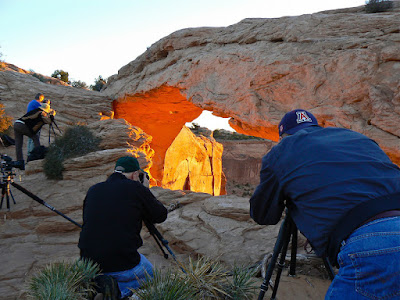Taking pictures in national parks is one of the most fulfilling endeavors for photographers because of the abundance of magnificent natural subjects. However, there are rules to consider if you do not want National Park Service (NPS) Rangers or, in extreme cases, the Feds approaching you for breaking the law.
 |
| Image source:myitchytravelfeet.com |
The first thing photographers need to determine is whether they need to apply for a permit or not.
The NPS states that it “will not require a permit for photographers, commercial or non-commercial, to go anywhere or to do anything that members of the public are generally allowed to go or do without a permit.” Essentially, most still photographs do not need to acquire a permit, especially if the photographer acts in the same way that most visitors do.
Even using a tripod, large lenses, or time-lapse accessories is permissible. However, other props or sets that are constructed or placed on the land or to stage specific scenes would require a permit.
These props include backdrops, generators, lighting, camera, trackers, camping equipment, and even trained animals. Using a model – person or object – for commercial purposes also needs a permit.
 |
| Image source:mikereyfman.com |
All commercial filming, which is defined by the law as the “recording of a moving image for a market audience with the intent of generating income,” needs a permit. Contrastingly, personal filming is allowed, as long as it would not be used in any commercial way.
My name is Keith W. Springer. I used to be an event photographer, but after I retired, I have given more focus on nature photography. When I have the time, I visit national parks with my wife, Laura. You can read more about it here.